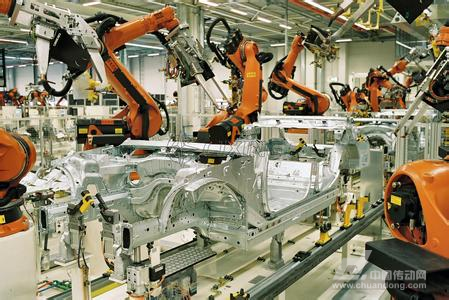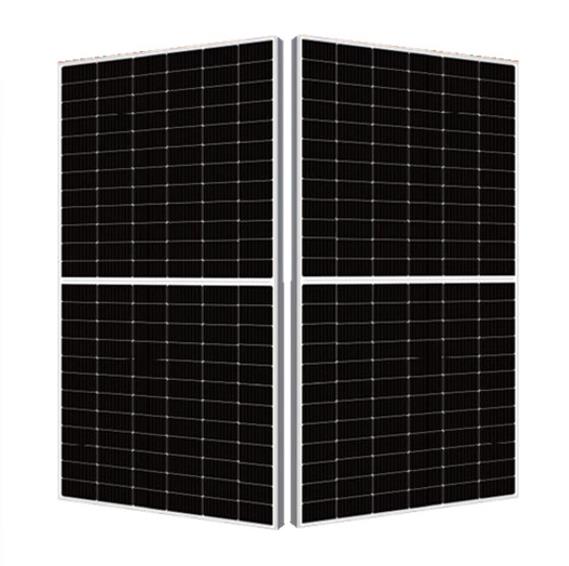On November 24th, at the “2017 Annual Conference of China’s Intellectual Industryâ€, Xin Renzhou, inspector of the Industrial Policy Department of the Ministry of Industry and Information Technology, stated that intelligent manufacturing is an advanced integration of advanced information technology and advanced manufacturing technologies. The entire process of production, management, and after-sales service is a brand-new production method.
“Subversive changes in production methods will be the core content of the new manufacturing industry.†Zhang Wenkui, director of the SME Research Institute of the State Council’s Development Research Center, believes that the new manufacturing industry that is being created in the future will not necessarily be the Internet. The manufacturing industry, but from the creative, design, manufacturing, sales and consumption to use the entire process of reform, this entire process must be the interactive participation of producers and consumers, will form a process reengineering.
“The change in this mode of production, I think, will have a big impact on the entire manufacturing industry in the future. It may be a trend for the people and the contrarian to die.†Zhang Wenku reminded Chinese companies and manufacturing companies to have a deep understanding of the new manufacturing industry. Development trends and characteristics.

Manufacturing returns
“Everyone needs to sound the alarm in their heads. Some people say that I’m so worried. I don’t necessarily have to worry about people completely.†Zhang Wenkui reminded at the opening that there are current trends toward manufacturing. Local governments at all levels are mentioning The proportion of the three industries, although the increase in three production is a trend, but it does not mean that the proportion of manufacturing should decline. The actual situation is that since 2010, the proportion of manufacturing industry in China's GDP has dropped from 33% to 30%, while the proportion of the financial industry in GDP has increased by 3% to 8.5%. "One advance and retreat is in fact a step away from reality, and the impact on the manufacturing industry is unthinkable." Zhang Wenkui pointed out that the trend of going to manufacturing is dangerous.
In contrast to Western developed countries, the opposite is true. The United States, Japan, Germany, and France are all formulating policies to attract the return of manufacturing, especially the high-end manufacturing industry. On November 21, the China Federation of Logistics and Purchasing issued a report stating that the US manufacturing PMI for October was 58.9%, which exceeded China's 51.6%. European manufacturing PMI for October was 57.2%, up 0.2% QoQ and also higher than China.
Zhou Lingkun, a partner in information technology at Deloitte, said that last year Deloitte had released the 2016 Global Manufacturing Competitiveness Index. He pointed out that in the next five years, the United States is expected to surpass China to become the most competitive manufacturing country in the world. By then, China will be ranked No. two. Zhou Lingkun pointed out: In fact, in the longer-term future, Japan’s intelligence-building capabilities will become even more prominent and may overtake China and the United States, and even India may catch up with China.
Zhang Wenku is worried about this. Zhang Wenkui believes that even if the ranking of China's manufacturing index temporarily ranks first in the world, the added value of China's manufacturing industry is very poor, far below the United States, Japan, Europe and other countries. Although there are global leading capabilities in some manufacturing areas such as high-speed rail integration, the overall manufacturing capacity is still relatively low. With the adjustment of China's industries, the dividends have disappeared, and more passive manufacturing has taken place, which will lead to a decline in the manufacturing industry, which will cause irreversible damage to the Chinese economy.
Fortunately, the relevant state departments have realized this problem and began to adjust industrial policies. The report of the 19th Party Congress pointed out that accelerating the building of manufacturing powers, accelerating the development of advanced manufacturing industries, and promoting the deep integration of the Internet, big data, artificial intelligence and the real economy.
Take advantage of
Xin Renzhou believes that in the past few years, the country has issued a number of policy measures to indicate the direction of strengthening manufacturing and smart manufacturing. After years of development, China has made great progress in information technology, hardware, and advanced manufacturing. Some industries have entered the world's forefront, such as high-speed rail, nuclear power, and home appliances. However, judging from the overall trend of adapting to the development of smart manufacturing and satisfying the requirements for the promotion of smart manufacturing, there are still some key core technologies that have a large gap with foreign countries.
Xin Renzhou stressed that the promotion of smart manufacturing must focus on key technologies and core equipment. For example, he said that the robots that are very important in smart manufacturing still have their speed reducers controlled by the “four big families†and the gap is still relatively large. "The key technology is controlled by others. It can be said that this is a fate, a weakness, and a risk. In the future, we must take technological innovation as our first motivation."
Xin Renzhou reminded the majority of companies that advancing smart manufacturing must adhere to problem-oriented and closely integrate with the country’s actual industrial restructuring. Do not blindly follow the trend and warm-headed, it must be combined with the specific circumstances of the industry, the company.
Zhang Wenkui believes that the orientation of the national policy is still biased toward industrial policies and does not pay enough attention to changes in production methods. He believes that the new manufacturing industry has produced some new features in the context of global integration and technological advancement. The new features are different from the new industrialization and are also different from the integration of informatization and industrialization, and are not exactly equivalent to “Made in China 2025â€.
"Subversive changes in production methods will be the core content of the new manufacturing industry." Zhang Wenkui believes. Taking steel as an example, the production method of the steel industry has been a process of automation and large-scale production for more than ten years. However, the use of steel for ball point pens is a very high-end material, and the demand is very small. If you use a large furnace to smelt it, you can make a furnace for one year. This can be very uneconomical for large steel plants. Different ballpoint pens have different performance requirements and composition requirements, as well as the size and processing of the writing tip, and the personalization requirements are getting higher and higher.
Therefore, the future demand of this type of market poses a challenge to many of the original large-scale automated production methods, requiring customized, interconnected, and intelligent production.
"The change in this mode of production, I think, will have a big impact on the entire manufacturing industry in the future, and it will likely lead the people who are in the market and the counter-balancers will die." Zhang Wenku reminded China's enterprises and manufacturing companies to firmly grasp the new manufacturing industry. The development trend and characteristics of the industry, and then targeted to promote technological transformation, technological innovation and process transformation. In this way, China's manufacturing industry can be invincible in the future of global competition in order to avoid passively going into manufacturing, so that modern industrial systems and modern economic systems can continue.
Monocrystalline Module 72cells 430-460W
Solar Panels collect clean renewable energy in the form of sunlight and convert that light into electricity which can then be used to provide power for electrical loads. Solar panels are comprised of several individual Solar Cells which are themselves composed of layers of silicon, phosphorous, and boron. Solar panels absorb the photons and in doing so initiate an electric current.

Monocrystalline Module 72Cells 430-460W,Solar Module Pv,Monocrystalline Solar Module,Solar Energy Mono Module
Jiangxi Huayang New Energy Co.,Ltd , https://www.huayangenergy.com